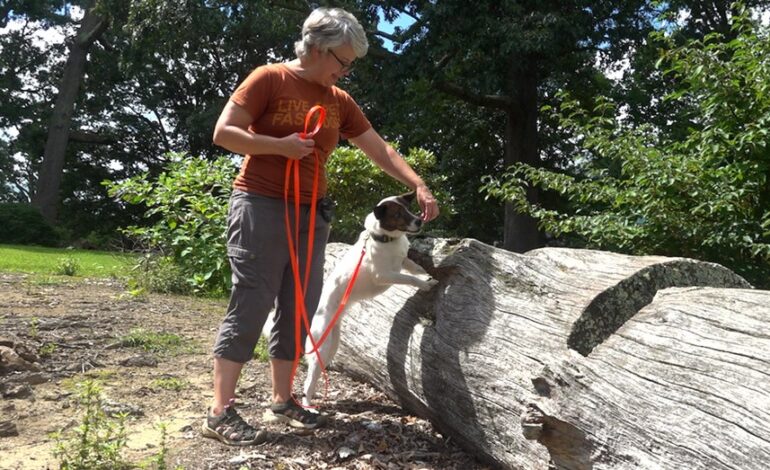Dogs Join Battle Against Invasive Spotted Lanternfly in Virginia

Researchers at Virginia Tech have unveiled a promising method to combat the invasive spotted lanternfly by training dogs to detect its egg masses. This innovative approach aims to mitigate the pest’s rapid spread, which has raised significant concerns among conservationists and farmers alike.
The spotted lanternfly, native to Asia, was first identified in the United States in Pennsylvania over ten years ago and has since expanded its range to 19 states, according to the United States Department of Agriculture (USDA). This insect poses a substantial threat to agriculture, particularly in the Midwest and Northeast, by feeding on various plants and excreting a sugary substance known as honeydew, which encourages mold growth on crops.
In this study, dogs trained by their owners participated in both indoor and outdoor scent tests to locate the egg masses of the spotted lanternfly. The egg masses can be challenging to find, as they often resemble dried mud and blend into their surroundings. The canine participants, including Katie Thomas and her nine-year-old pit bull mix, Finch, showcased their skills in identifying these critical targets.
Katie Thomas expressed her enthusiasm about the project, stating, “To be able to do things that we already do, that we are having a lot of fun with… train our dogs to sniff stuff, being able to apply that to something like a real problem that affects our community is really fulfilling.”
Another participant, Carolyn Shelburne, and her border collie, Hermes, were among the first five K9 and handler teams to successfully complete their field tests. In total, 182 volunteer teams from across the United States took part in the study. The results were impressive: during indoor tests, dogs accurately identified the lanternfly scent over 80% of the time, while they achieved a success rate of more than 60% in outdoor settings.
This initiative not only highlights the potential of dogs in environmental conservation but also encourages dog owners to engage in meaningful activities with their pets. Carolyn Shelburne remarked, “Hopefully, more people will see that you can train any dog to do this, and it gives you something fun to do with your dog.”
As the spotted lanternfly continues to pose challenges for agriculture and ecosystems, researchers believe that this collaboration between humans and dogs could be just the beginning. The success of this study opens the door for training dogs to detect other invasive species, thereby enhancing conservation efforts across various regions.
The findings from this groundbreaking research at Virginia Tech could catalyze community involvement in invasive species management, allowing everyday citizens to play a vital role in protecting local environments. As the fight against the spotted lanternfly intensifies, the partnership between dogs and their handlers may prove to be a valuable asset in preserving biodiversity and agricultural integrity.






